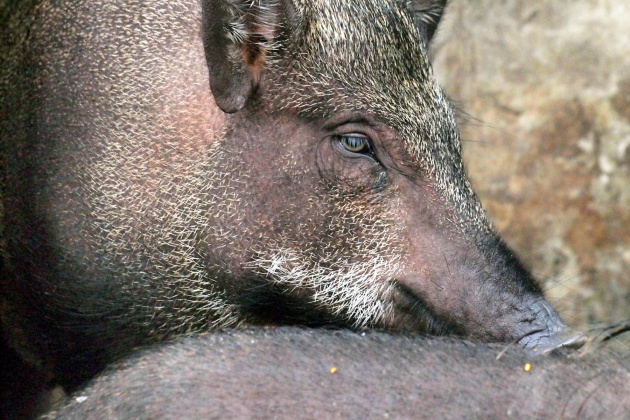OKLAHOMA CITY – Eradicating wild pigs is not easy. Just to keep a herd of wild hogs (known as a “sounder”) at a manageable number requires killing 70% of the animals, said Scott Alls, state director of Wildlife Services in the U.S. Department of Agriculture’s Animal and Plant Health Inspection Service (USDA-APHIS).
“That’s just to flatline. Anything above that, 80% to 90%, is when you start reducing their numbers,” he said. Feral swine have high reproductive potential; piglets become sexually mature at about six months of age and have their first litter at nine months, Alls said. Wild hogs have been detected in at least 70 of the state’s 77 counties, but they are most prevalent across the southern parts of Oklahoma, according to the Oklahoma Department of Wildlife Conservation.
“They don’t have a home range,” Alls said. Based on sightings, habitat disturbance, and current control efforts, feral swine remain a substantial concern in the Wichita Mountains Wildlife Refuge. Feral hogs in Oklahoma have no natural predators. Coyotes “may take some of the little ones,” Alls said, but aren’t inclined to challenge an adult because wild pigs are so aggressive and their hide is too tough. The only natural enemies facing wild pigs are humans and weather, particularly drought, Alls said.
WILD PIGS AFFECT WATER QUALITY, TRANSMIT DISEASE
Wild pigs can have an adverse effect on the quality of water, “whether it’s a pond or lake or a stream,” said Trey Lam, executive director of the Oklahoma Conservation Commission. Where feral hogs wallow, “The soil is disturbed, so the soil and any fertilizer applied on it can get washed into a nearby stream or lake.” Feral swine wallows are prime mosquito habitat that contribute to the prevalence of various mosquito-borne diseases, the USDA reports. Wallows can also be a place of transmission for bacteria and parasites from feral swine to native wildlife that come to drink, the USDA says.
Meat from a feral hog carcass can be eaten, but it should be cooked at no less than 165 degrees, Alls said. “The greatest danger is the potential for disease transmission in the field dressing and skinning of the animal,” he said. Feral swine can be infected with brucellosis and leptospirosis, which can be passed to people. Pseudorabies is found in about one-third of the feral swine population. This disease can spread to dogs, cattle, goats and sheep. Feral hogs also can carry and transmit many other diseases.
FERAL HOGS COMPETE WITH NATIVE WILDLIFE
Feral swine also put stress on native species. The hogs compete with native wildlife for food that supports deer, raccoons, black bears and opossums. The hogs not only destroy habitat, they also prey on the eggs and young of native ground-nesting birds and reptiles, including threatened or endangered species, the USDA reports. Game birds such as wild turkeys, grouse and quail are adversely affected. Feral hogs actively hunt small mammals, frogs, lizards and snakes, according to the USDA, and have even been documented killing and eating deer fawns, Lam said. “These animals are perceived to be herbivores but actually they’re omnivores,” said Scott Alls of the USDA.
The first documented record of feral swine in the United States was in Florida in 1593. Introductions followed in several other southeastern states, which led to established free-ranging populations throughout the region. Populations then spread throughout the southeast and mid-south states. Estimates on the feral swine population in Oklahoma range from 600,000 to 1.5 million. Their numbers and range continue to increase because of their high reproductive potential and the lack of natural predators.


